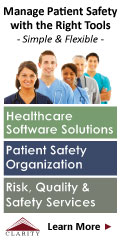
September / October 2006

MRI Suites: Safety Outside the Bore

By Tobias Gilk, M.Arch.
MRI suites hold unique dangers for patients and staff. Today's high-strength clinical MRI scanners are up to 60,000 times the strength of the Earth's own ambient magnetic field. While exposure to magnetic energies has shown no harmful biological effects — unlike modalities that rely on ionizing radiation such as CT or conventional X-ray — there are still many accidents and incidents that jeopardize the safety of patients and staff in the MRI suite.
The proliferation of MRI equipment and significant increases in both magnet strength and spatial gradients (the rate at which magnetic field strength increases as you approach its center) have increased the number of accidents occurring in the MRI suite. Each accident and close call puts patients and staff at risk and carries the potential of damaging, if not crippling, over a million dollars worth of imaging equipment.


|













